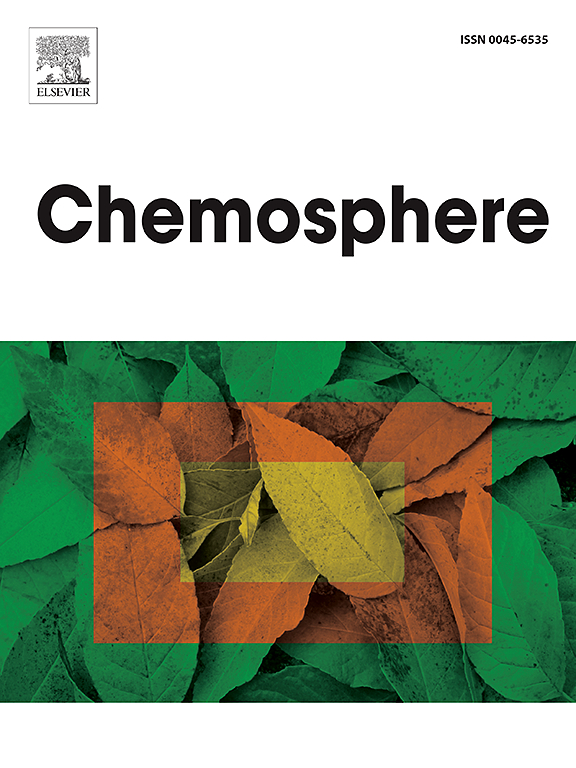Fluoroquinolone ciprofloxacin removal from synthetic and real wastewaters by single and combined electrochemical advanced oxidation processes. A review
IF 8.1
2区 环境科学与生态学
Q1 ENVIRONMENTAL SCIENCES
引用次数: 0
Abstract
Ciprofloxacin (CIP) is a widely prescribed fluoroquinolone antibiotic detected in the aquatic environment fostering the emergence of bacteria and posing risks the human health and ecosystem integrity. The present comprehensive critical review deals with CIP removal from synthetic and real wastewater by electrochemical advanced oxidation processes (EAOPs) up to 2024. Lower performance was obtained in real wastewaters than synthetic ones because their components scavenged-generated oxidizing agents. Anodic oxidation (AO) has been developed with active dimensionally stable anodes (DSA) and the non-active potent boron-doped diamond (BDD) one, where CIP solutions in chloride medium reached a maximal of 75 % mineralization. A more rapid CIP degradation and up to 96 % mineralization have been found for homogeneous electro-Fenton (EF) with Pt and Fe2+ catalyst. Heterogeneous Fenton with functionalized iron cathodes and solid iron catalysts, and heterogeneous EF-like with non-ferrous catalysts gave worse results. Novel modified EF processes with dual cathodes for direct.•OH production after H2O2 electrogeneration allowed up to 96 % mineralization. Photoelectro-Fenton (PEF) with UVA light and solar PEF (SPEF) can yield overall mineralization by the rapid photolysis of final Fe(III)-carboxylate species formed. Photoelectrocatalysis (PEC) with new photoanodes like FTO/Ni–ZnO under UVA light yielded 87 % mineralization. Hybrid AO, EF, PEF, and PEC processes with persulfate, O3, ultrasounds, or photocatalysis were more powerful than their single EAOPs. The characteristics and performance of each method, the generation of oxidants (•OH, O2•−, and/or 1O2), its reusability, and the by-products produced are discussed. The loss of toxicity of the treated solutions by EAOPs is finally detailed.

单一和联合电化学深度氧化法去除合成废水和实际废水中的氟喹诺酮类环丙沙星。回顾
环丙沙星(CIP)是一种广泛使用的氟喹诺酮类抗生素,在水生环境中被发现,促进细菌的出现,并对人类健康和生态系统的完整性构成威胁。本文综述了截止2024年电化学高级氧化工艺(EAOPs)去除合成废水和真实废水中CIP的研究进展。在实际废水处理中,由于其成分是由清除产生的氧化剂,其性能不如合成废水。采用活性尺寸稳定阳极(DSA)和非活性强硼掺杂金刚石(BDD)阳极进行阳极氧化(AO),其中CIP溶液在氯化物介质中矿化率最高可达75%。在Pt和Fe2+的催化下,均相电fenton (EF)的CIP降解速度更快,矿化率高达96%。具有功能化铁阴极和固体铁催化剂的非均相Fenton和具有非铁催化剂的非均相类efon效果较差。新型改进的直接双阴极EF工艺。•H2O2发电后的OH产量允许高达96%的矿化。UVA光的光电fenton (PEF)和太阳光的光电fenton (SPEF)可以通过快速光解最终形成的Fe(III)-羧酸盐种而产生整体矿化。在UVA光下,采用FTO/ Ni-ZnO等新型光阳极进行光电催化(PEC),矿化率达到87%。在过硫酸盐、O3、超声波或光催化作用下,AO、EF、PEF和PEC混合过程比它们的单一EAOPs更强大。讨论了每种方法的特点和性能、氧化剂(•OH、O2•−和/或1O2)的生成、可重复使用性和产生的副产物。最后详细介绍了EAOPs处理后溶液的毒性损失。
本文章由计算机程序翻译,如有差异,请以英文原文为准。
求助全文
约1分钟内获得全文
求助全文
来源期刊

Chemosphere
环境科学-环境科学
CiteScore
15.80
自引率
8.00%
发文量
4975
审稿时长
3.4 months
期刊介绍:
Chemosphere, being an international multidisciplinary journal, is dedicated to publishing original communications and review articles on chemicals in the environment. The scope covers a wide range of topics, including the identification, quantification, behavior, fate, toxicology, treatment, and remediation of chemicals in the bio-, hydro-, litho-, and atmosphere, ensuring the broad dissemination of research in this field.
 求助内容:
求助内容: 应助结果提醒方式:
应助结果提醒方式:


